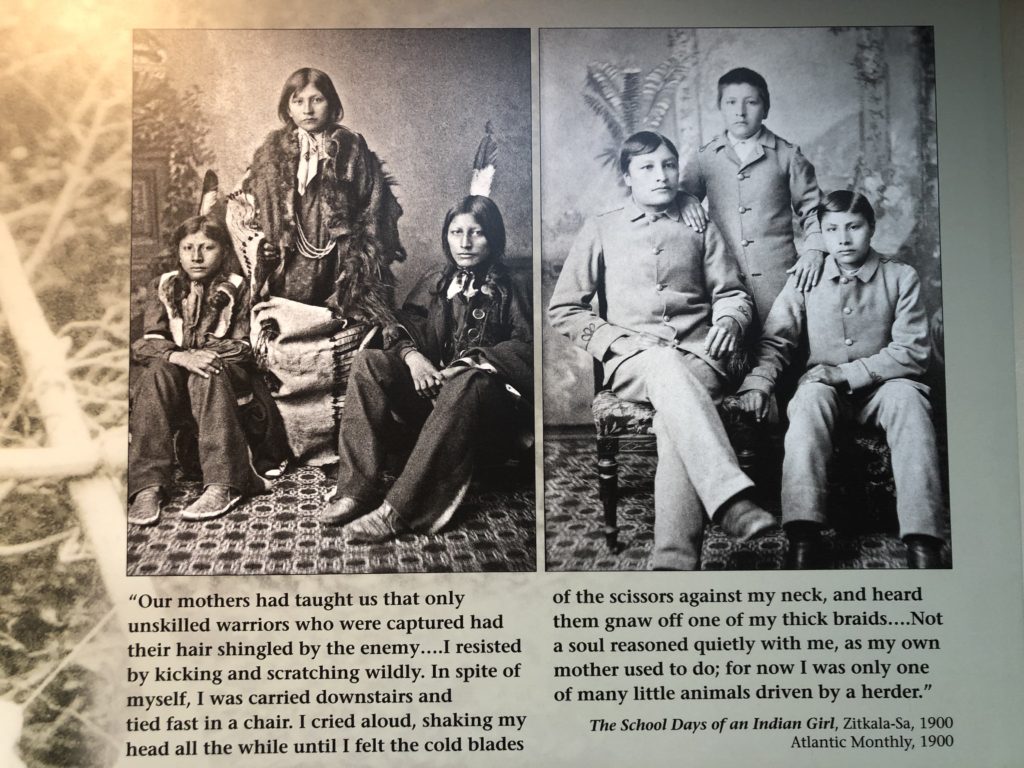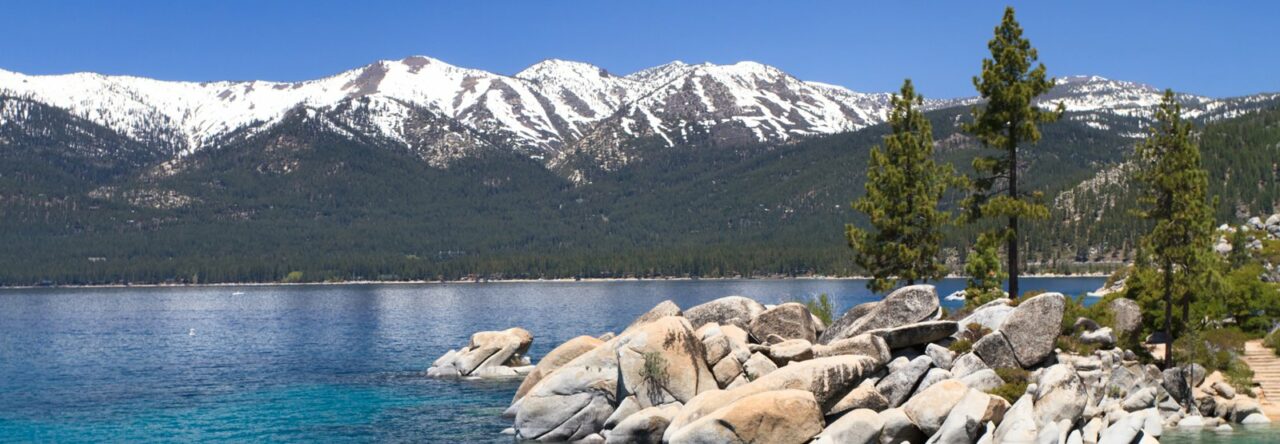Ugh. I’ve been delaying this post. There is a lot of difficult Native American History in general and a lot of the Plains Indians history is in this area. And I’m learning a lot of it now. I knew stories in general, but never with any real understanding. I know I’m far from that still, but feel like I’m finally piecing things together. We watched “Bury my Heart at Wounded Knee” last night with the kids. It was hard, they cried, but I feel like if they are old enough to watch the violence in Marvel movies, they can and should watch this kind of violence as well. It’s good to have perspective. We realized that this was definitely a Hollywood-ized version of the book, but it is a good overview and introduction to the topic and we wanted the girls to understand the importance of when we drove to Wounded Knee Massacre Site and why we were even driving there. It’s worth watching. I ended up staying up well past midnight doing my own research and trying to understand the timeline of what and why this all happened because the movie is not very clear in quite a few areas. Why Sitting Bull is famous? Was he killed at Wounded Knee? If he was the “last stand” for the Lakota and wasn’t willing to adopt the “white ways” why did we see a picture of him with Buffalo Bill Cody in the Wild West Show? Why wasn’t Crazy Horse in the movie. Who is Red Cloud and why do I keep seeing picture of him? What exactly happened at the Wounded Knee Massacre?
Hopefully I provide a timeline with some of the known people from the past and places without inaccuracies. I realize I still have some holes to fill.
It was fitting that as we drove down to the southern entrance of the southern unit of Badlands National Park which is co-managed with the Oglala Lakota Nation, we see the ranger putting up both the American flag and the OglalaLakota flag. The ranger was a 22 yo member of the Oglala Lakota tribe who grew up a few miles south of there in the Pine Ridge Reservation in Porcupine, SD and attended the local school on the reservation.
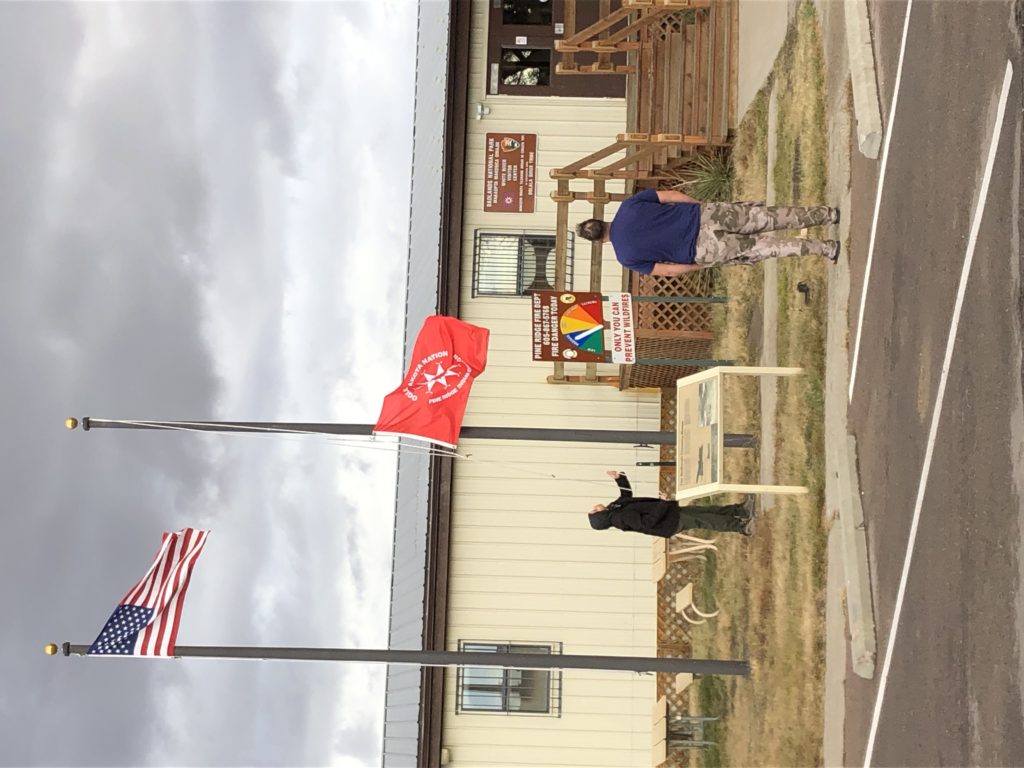
Many Lakota people do consider themselves Sioux Indians. The French gave the name to the Lakota, Dakota, and Nakota people the name of “Sioux Indians”. It is a very large band of tribes crossing a very large area.
Crazy Horse and Chief Red Cloud are a part of the Oglala Lakota people. Red Cloud is a generation older than Crazy Horse. Chief Sitting Bull is part of the Hunkpapa Lakota people and is younger than Red Cloud, older than Crazy Horse. Chief Big Foot is the half brother of Sitting Bull and was also a Hunkpapa.
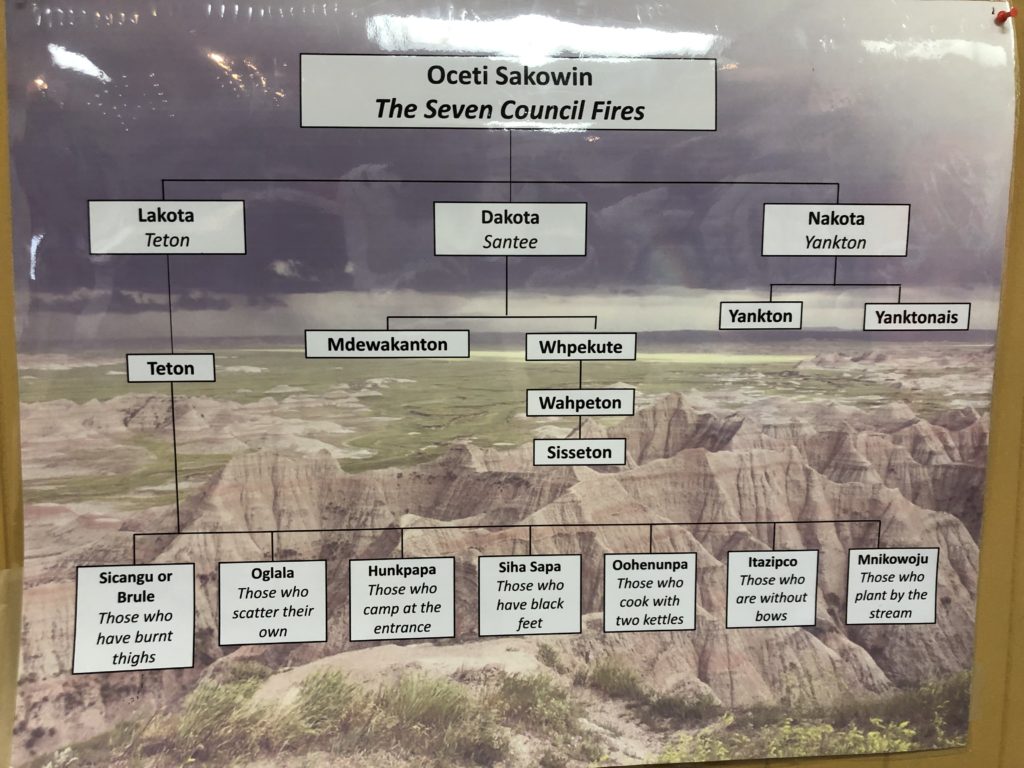
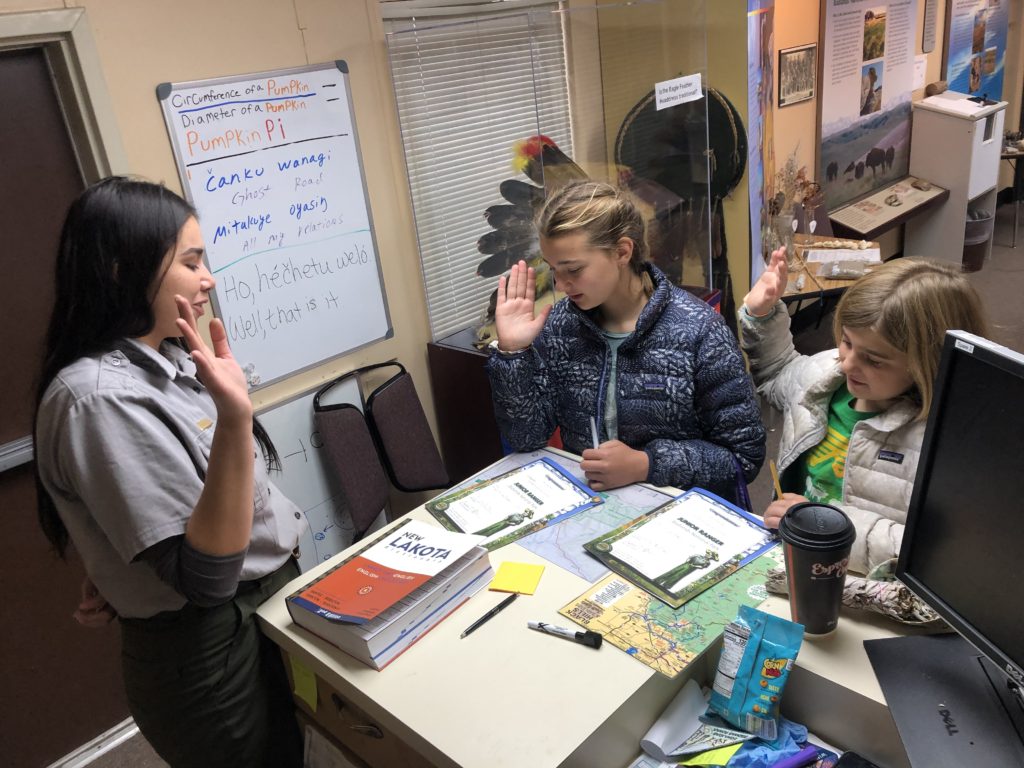
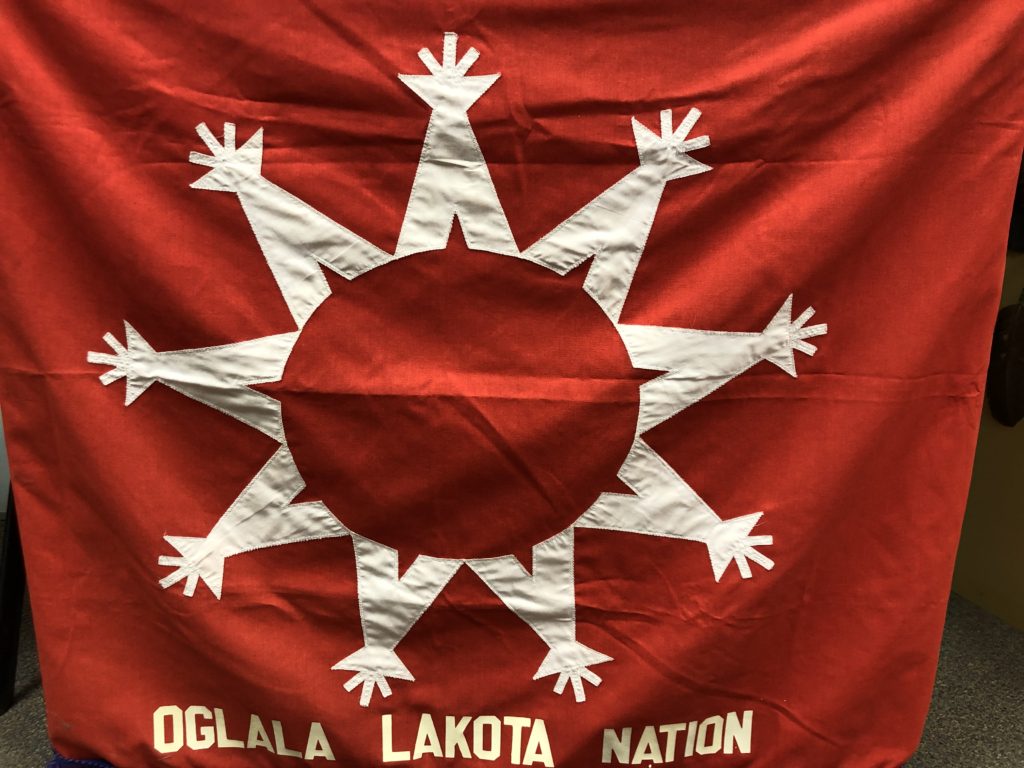
Chief Red Cloud, was born in 1822 and died 1909 in the Pine Ridge Reservation. Of the above “famous Native Americans” he is the only one that died from old age. I don’t know enough of what happened before the Battle of Little Big Horn so I need to stay out of that part of history for now.
What I do know is that Chief Red Cloud fought the U.S. during what was known as the “Red Cloud Wars” 1866-68 led to the Native Americans having the “upper hand” in the 2nd Fort Laramie Treaty of 1968 where the “Great Sioux Reservation”, which included the Black Hills was formed. Both Crazy Horse and Sitting Bull fought in the Red Cloud Wars. Soon after in 1871 Red Cloud tried to help the transition of his people to a different way of life and began living in the “agencies” or the reservations.
In 1874 Gold was found in the Black Hills. In 1875 the U.S. was unsuccessful in purchasing the Black Hills from the Sioux and orders all Indians to report to reservations by January 31, 1876. Any Native not living in a reservation is to be considered a “hostile”. This led to the Great Sioux War of 1876-77.
The Plains Indians were nomadic who followed the bison and living in a home on a reservation went against every part of their culture. Sitting Bull and Crazy Horse are 2 of the most famous Plains Indians who were the last “hold out” for the Lakota way of life. Crazy Horse was considered the greatest warrior during the Battle of Little Big Horn. Sitting Bull was the “medicine man” of the Lakota during this time. The defeat of the U.S. in the Battle of Little Big Horn in June 1876 led the Americans to unleash a much larger force of their military against the “hostiles”.
Crazy Horse formally surrendered in May 1877, but was killed in August 1877 with a bayonet by Indian Military Police.
Sitting Bull refusing to surrender led a band of Lakota north to Canada in May of 1877. The lack of bison up north and the limited land they were given by the Canadian government he returned to the U.S. and formally surrendered in July 1881. “Sitting Bull said to Brotherton at Fort Buford, “I wish it to be remembered that I was the last man of my tribe to surrender my rifle.” To the Oglala Lakotas, Dakotas and Nakota, “to surrender my rifle” in this context meant “We have killed enough white men with your own rifles so I give this rifle back to you”.
In 1885 Sitting Bull joined Buffalo Bill and the Wild West Show for 1 season.
During these years living on reservations the health and culture of the Native Americans had catastrophic changes. Their emotional and physical health had been deteriorated. Agreed upon rations were cut and disease ravaged through. Attempting to live like the “whites” was not working for them.
In response, a new movement started, the Ghost Dance Movement. It called on the Indians to dance and chant for the white man to disappear, the rising up of their deceased relatives, and the buffalo to disappear. This movement scared the white people into thinking that the Native Americans would leave the reservations and begin a new war.
The Indian military police went to go arrest Sitting Bull because he was very much a respected elder within the reservation and didn’t want him encouraging the Ghost Dance Movement and there was a rumor he would leave the reservation. During the arrest Sitting Bull fought against the arrest and was shot twice and died. Sitting Bull was shot and killed on December 15, 1890.
The band of Hunkpapa Lakota who was living with Sitting Bull feared retaliation because 2 officers were also killed. They fled west to Chief Big Foot and along with Chief Big Foot and his band they all fled south to join Chief Red Cloud south in the Pine Ridge Reservation, crossing the badlands. Chief Big Foot was fighting pneumonia. They were captured and they surrendered at Wounded Knee.
The next morning on December 29, 1890 the U.S. cavalry placed 4 Hotchkiss Mountain Guns around the camp. The U.S. wanted to “disarm” the Indians. The story is that a “deaf tribesman reluctant to give up his rifle because he had paid a lot for it”. The rifle went off and the massacre ensued. The U.S. killed all 250-300 men, women, and children. It was a massacre. Half the Indians were shot close range within a very short period of time. The U.S. used the Hotchkiss guns on everyone, including the white people. Many women and children had run for cover. The military hunted everyone down. Bodies were found days later over 2 miles away from the original site. There was a blizzard the next 3 days and they were only able to return later to collect the bodies.
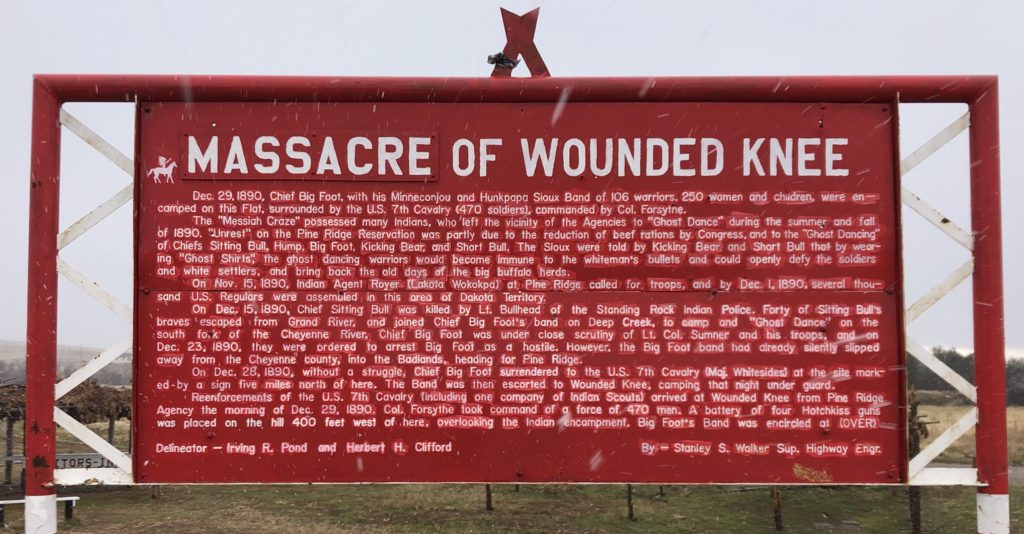
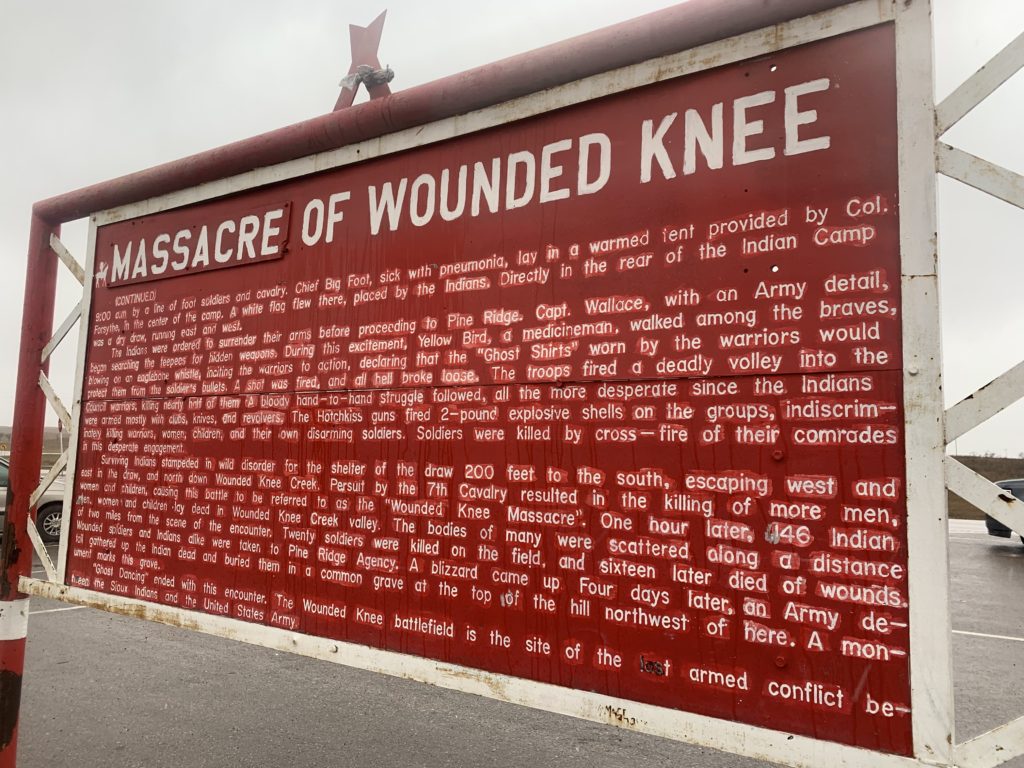
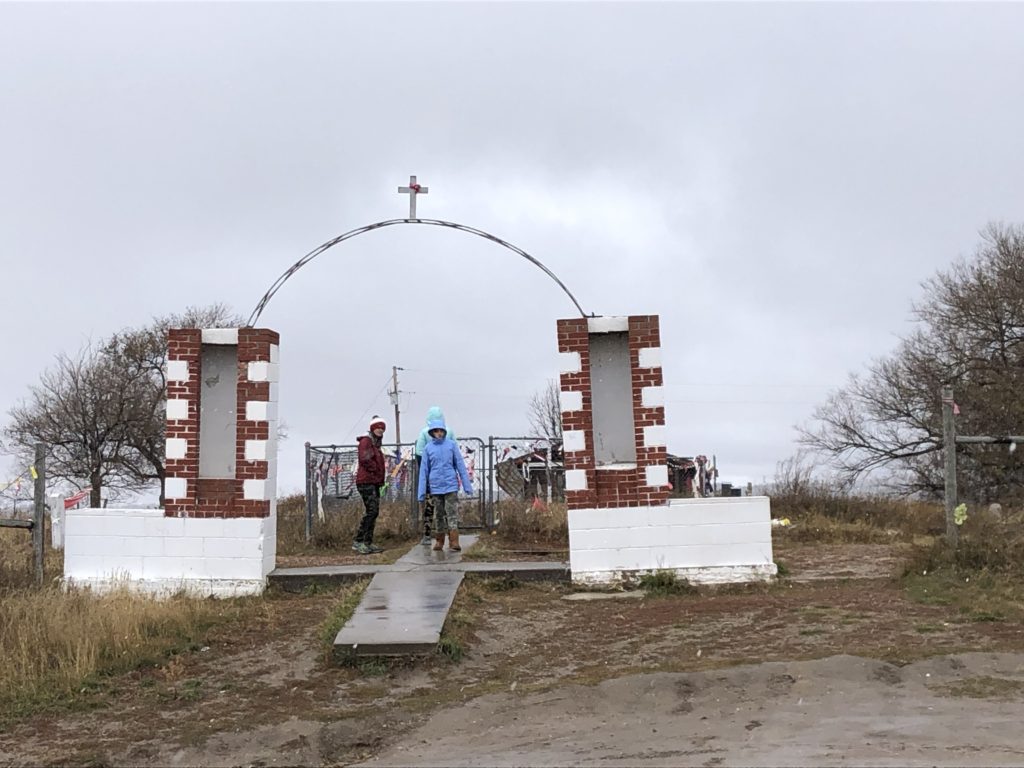
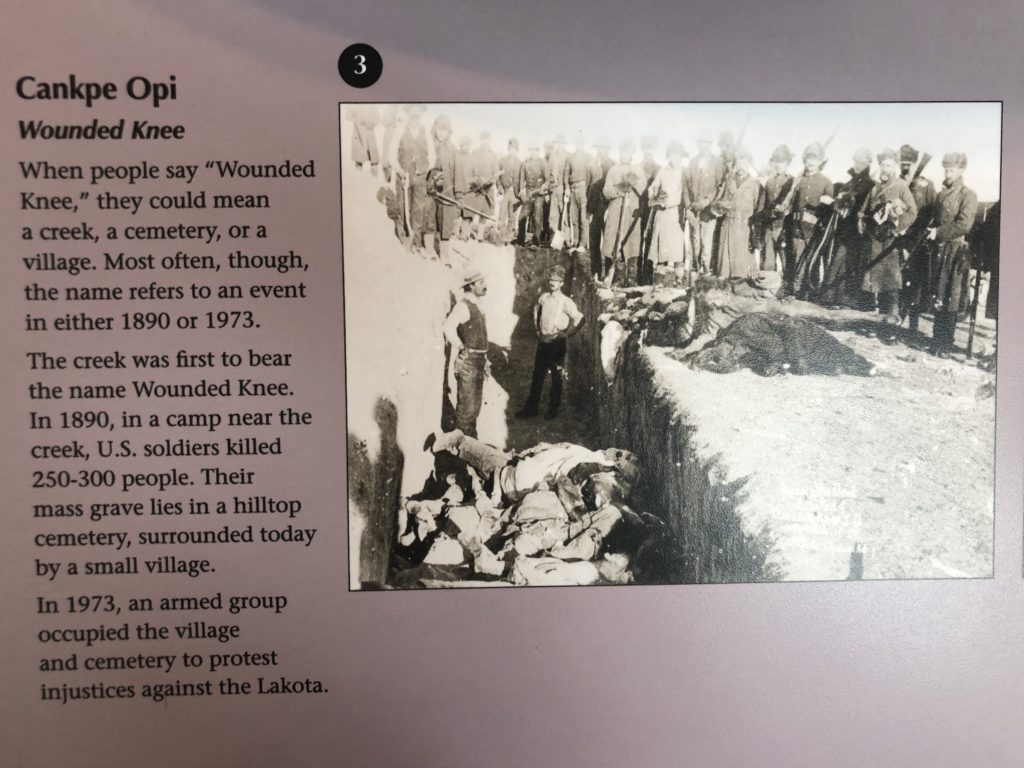
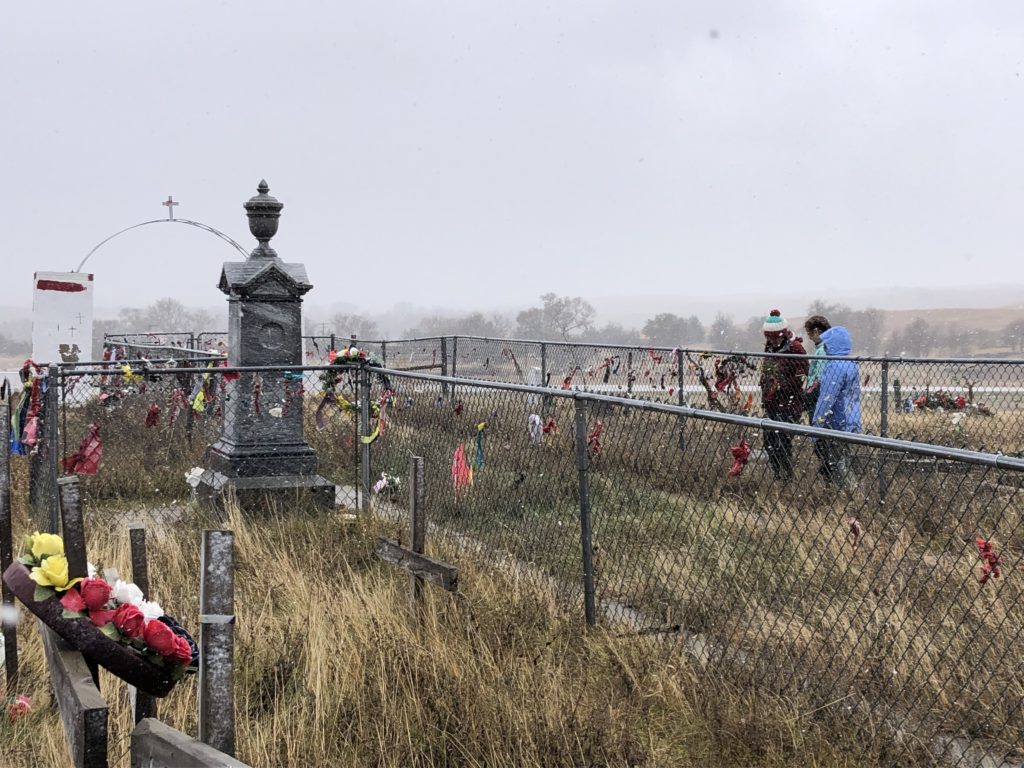
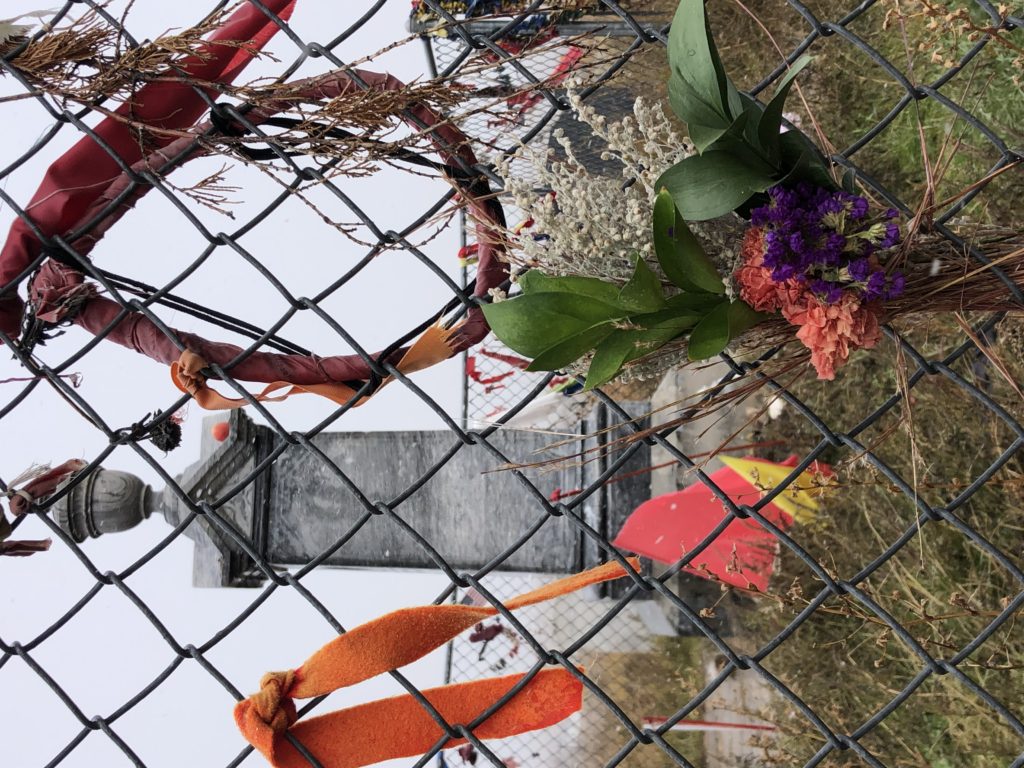
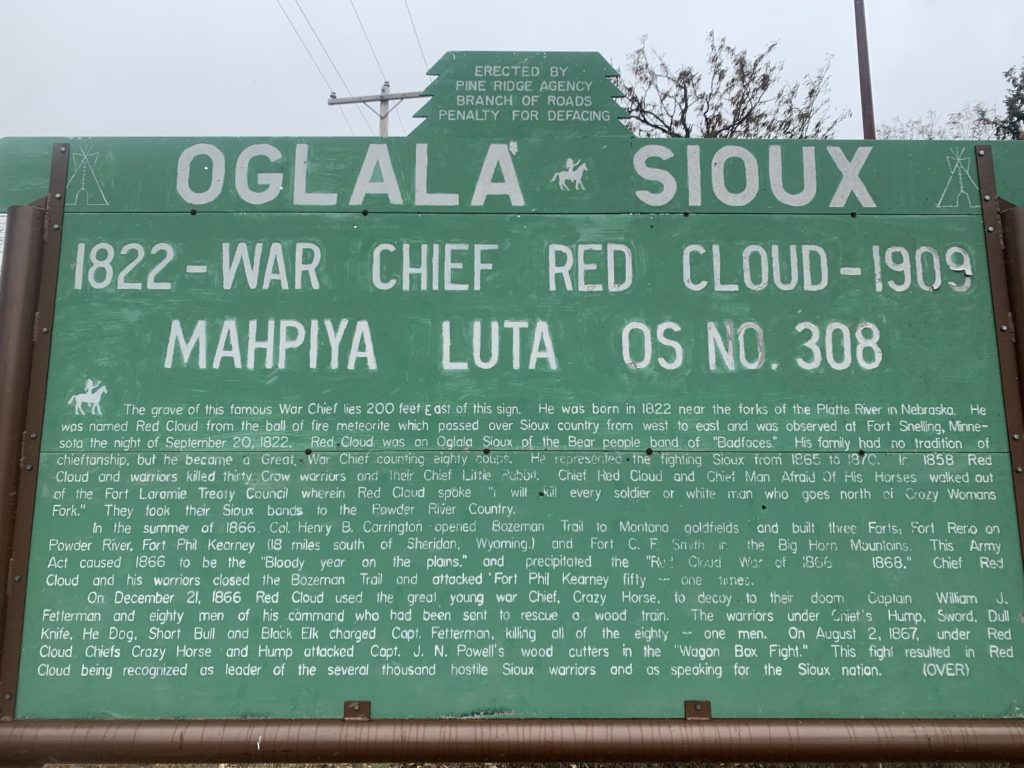
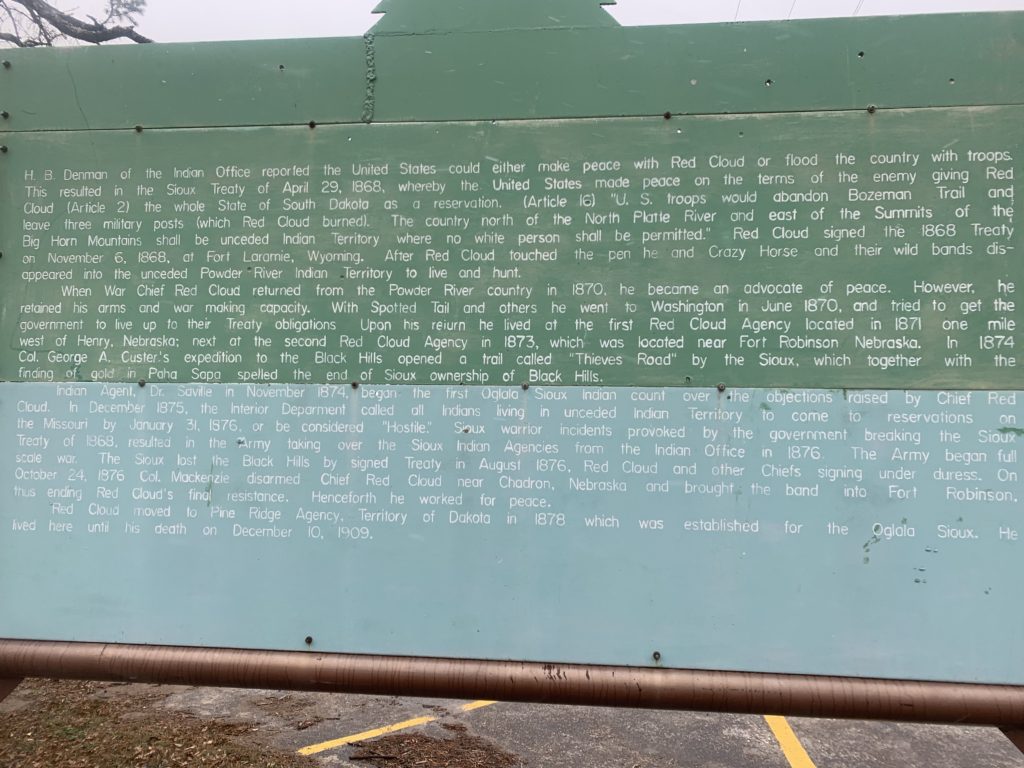
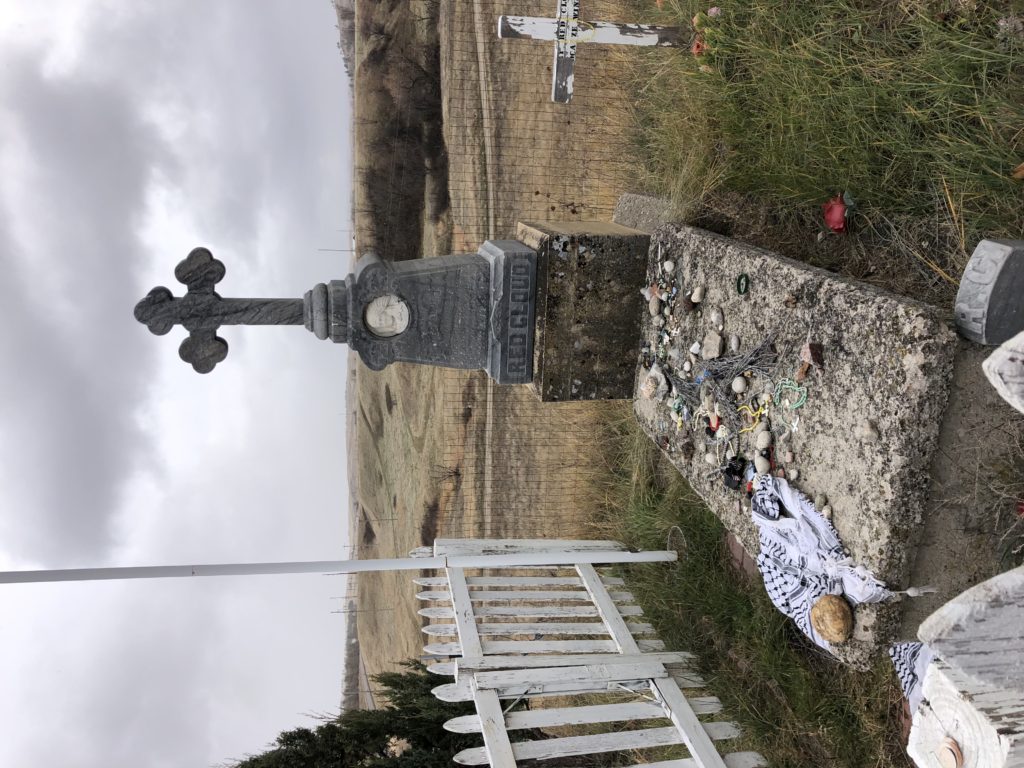
As I’m writing this I’m really not happy with how I’m explaining this now, I may have to come back to this post, but its too late for me to think properly right now…but I highly recommend the book Bury my Heart at Wounded Knee.
